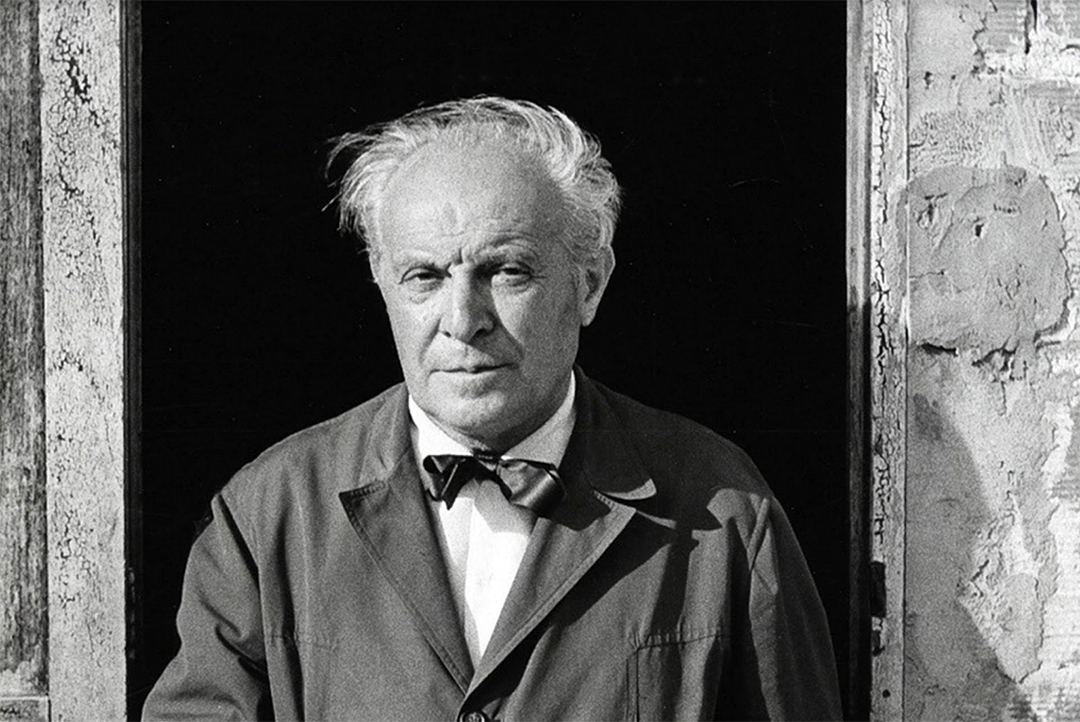THE BONTONIANO | ARCHITECTURE
In the world of design few names are as revered as Gio Ponti. The Milan native is considered by many to be the father of modern Italian design.
A designer of a thousand talents, the prolific Ponti worked for 120 companies during his long career, wearing multiple hats as an architect, product designer, magazine editor, and academic.
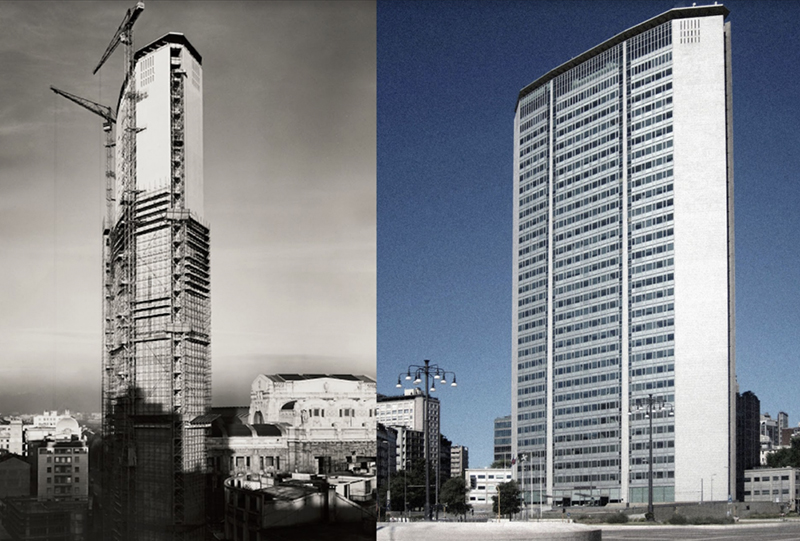
Pirelli skyscraper under construction & view of facade, Milan. Photos: © Paolo Rosselli & © Gio Ponti Archives
Ponti’s influence can still be felt today across many disciplines: the late architect bequeathed his hometown with a landmark building – the Pirelli skyscraper – that has become as well known as the city’s Duomo cathedral. Completed in 1960, Ponti’s design shunned the standard block form commonly seen in skyscrapers at the time and opted for a bold, structural skeleton that is visible from the outside. Slender as a supermodel – its width is a mere 18 meters – it features tapered sides like the bow of a graceful liner. In Manhattan, architects of the Pan Am building took inspiration from her lovely tapered form when they created what was to become a signature tower in that city’s skyline.
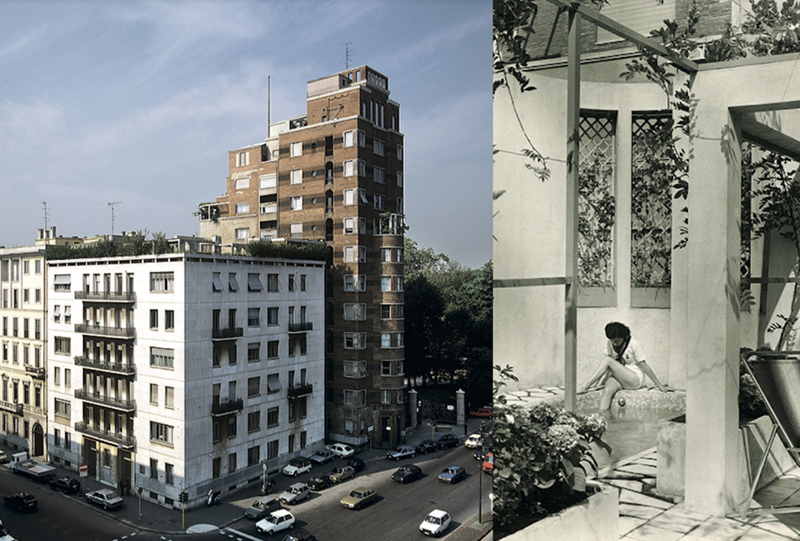
Rasini House and Tower, Milan. Designed by Ponti in 1933. Photos: © Paolo Rosselli & © Gio Ponti Archives
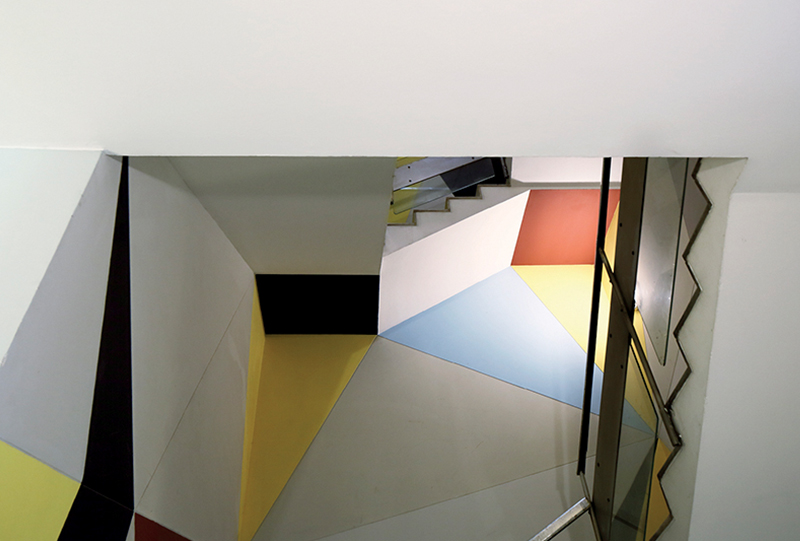
Casa Melandri, Milan. Designed by Ponti in 1957. Photo: © Paolo Rosselli
From the pages of the architectural magazine Domus, which Ponti founded in 1928, he supported not only the built environment but encouraged crafts and the decorative arts, most notably ceramics. He would go on to work with ceramics at Florence-based Richard Ginori, where he assumed the role of artistic director, going on to produce many tile designs for interiors and exteriors. Further evidence of his love of ceramics can be seen in the Hotel Parco dei Principi in Sorrento. Ponti designed the building from top to bottom, including working with Ceramica D’Agnostino to create eye-catching blue and white ceramic tile designs that are seen throughout the hotel from the reception area to the bedrooms.
In furniture, Ponti was successful in developing striking pieces that are defined by a timeless style that permits them to be as relevant and fresh today as when he first envisioned them. His impressive portfolio of furniture includes his famous Superleggera chair for Italian producer Cassina that stands out for its simplicity and functionality, a sleek, understated shape that has become a benchmark of good taste.
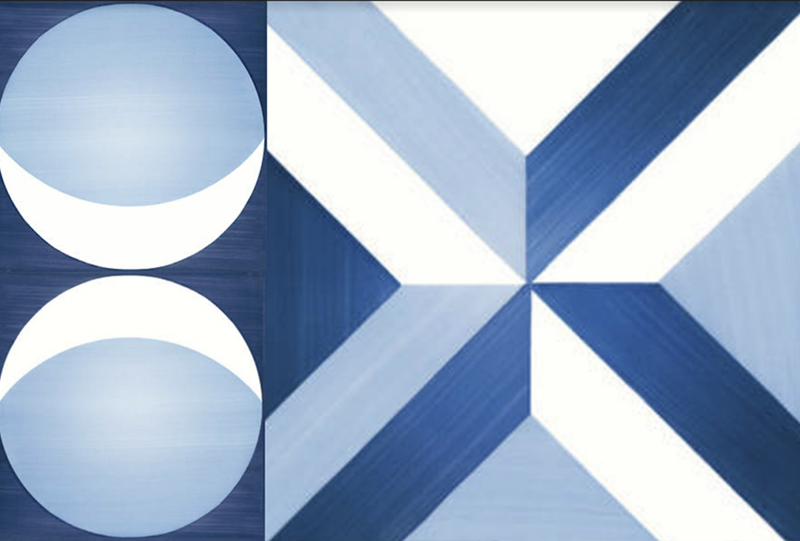
Detail of geometric tiles created by Ponti for the Hotel Parco dei Principi, Sorrento.
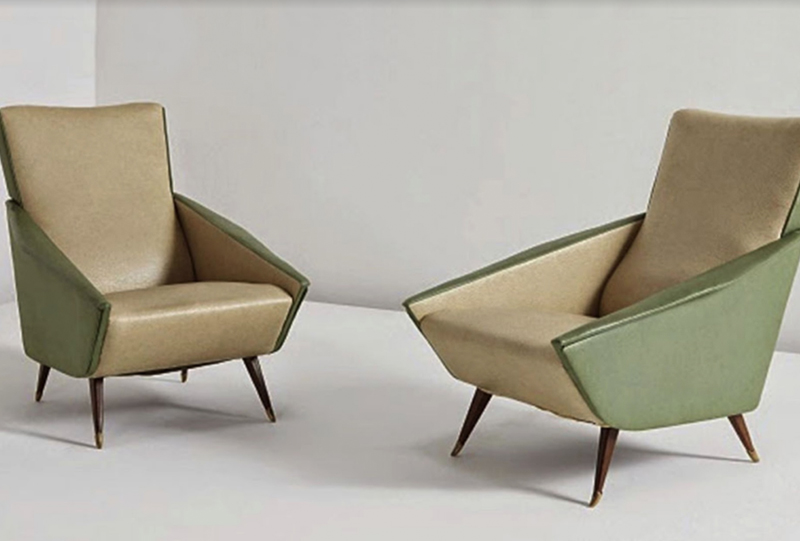
Distex lounge chair model 807. Designed by Ponti for Cassina in 1953.
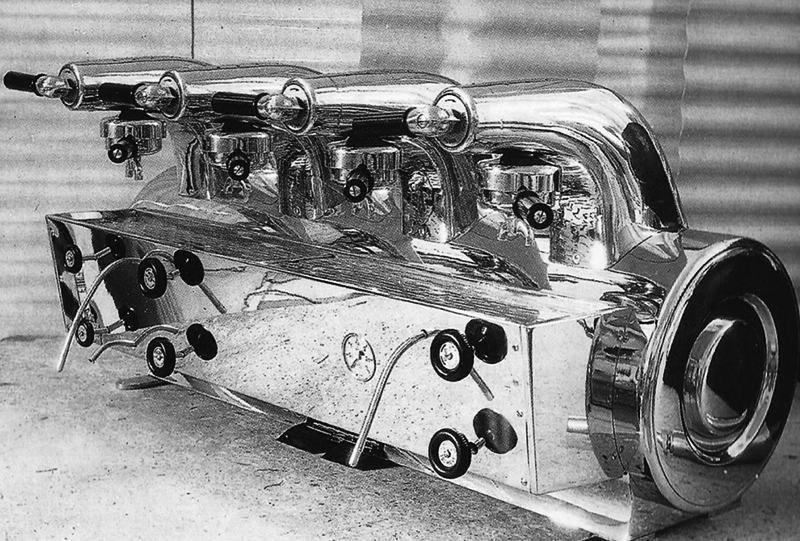
La Cornuta espresso machine. Designed by Ponti for Pavoni in 1948.
Perhaps what is most remarkable is that Ponti’s inexhaustible creativity permeated across various fields: architecture, furniture, ceramics, and publishing. According to Stefano Boeri, former editor-in-chief of Ponti’s Domus and currently president of Milan’s respected Triennale Design Museum, Ponti was “able to overcome – in a manner that makes him seem wholly contemporary even today – the obsession with creating a recognizable work, in which what predominates is the unmistakable imprint of its creator, choosing instead to resort on each occasion to unprecedented forms; forms in which originality was a continual conquest, fed by the eclectic materials of the history of art, architecture and the city.”
INFORMATION:
